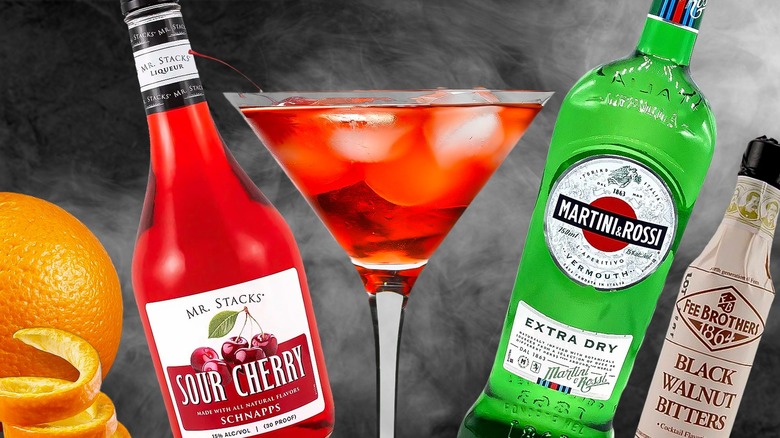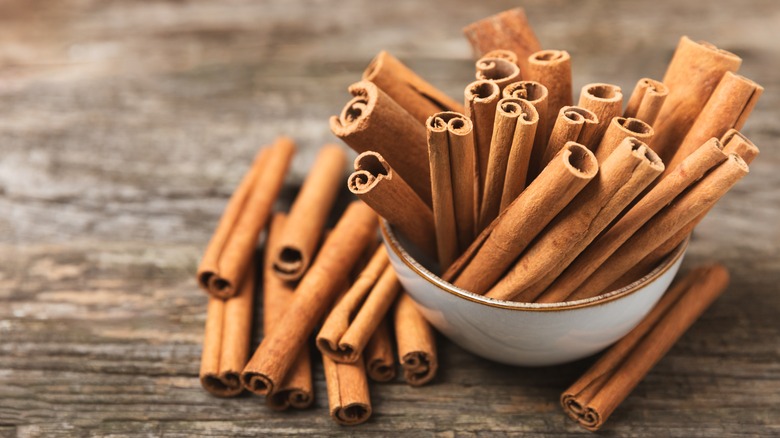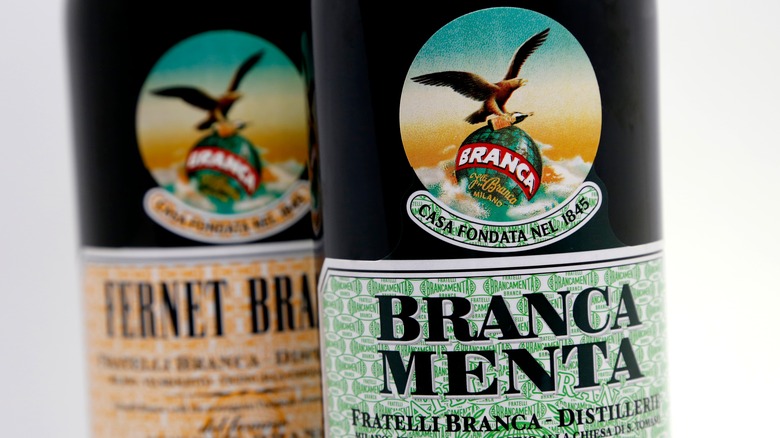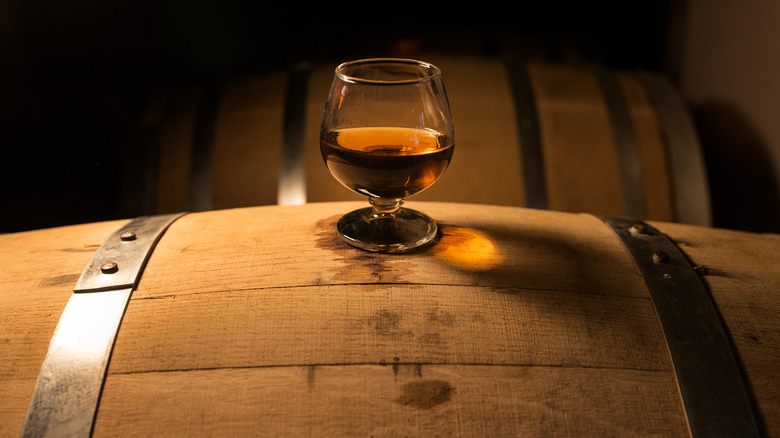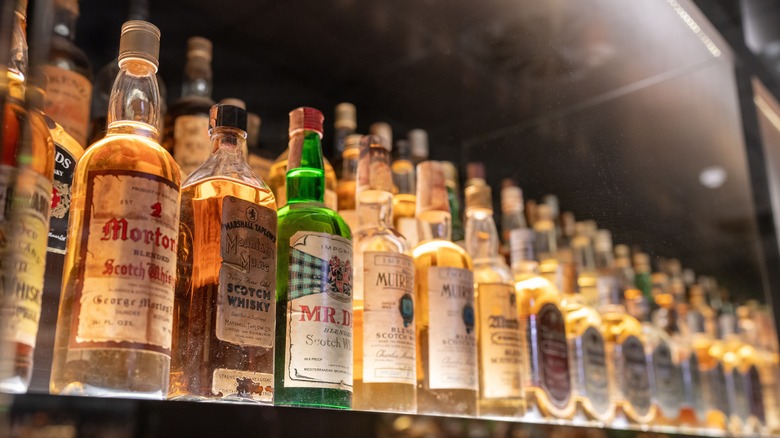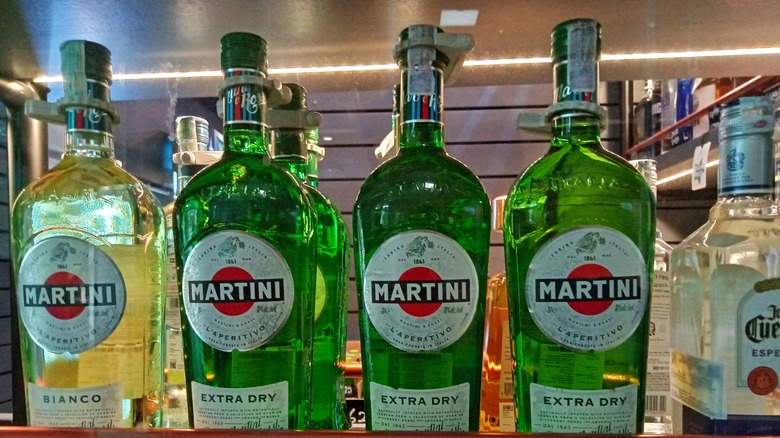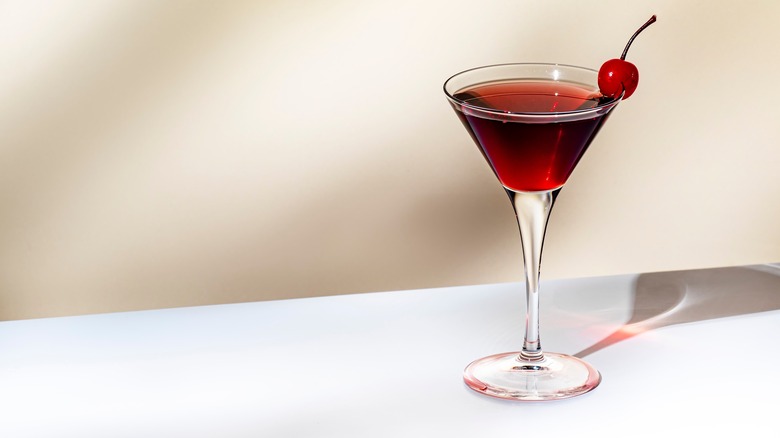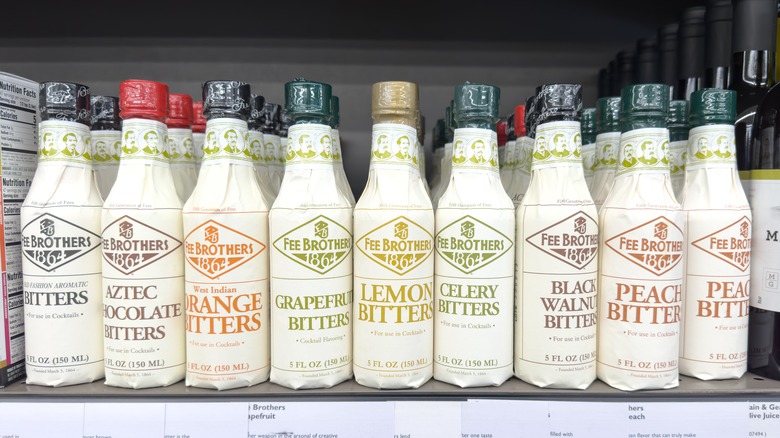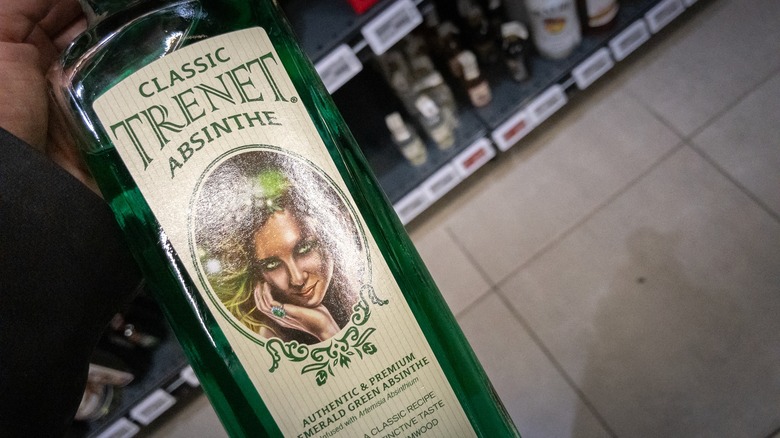8 Expert Upgrades For A Manhattan Cocktail
There's nothing more elegant than a simple, timeless, classic Manhattan cocktail. Consisting of just three ingredients — rye whiskey, Angostura bitters, and vermouth — the Manhattan has become a favorite at cocktail bars, both with customers and bartenders. Customers love the smooth feel of the drink and the delicious sweet and slightly spicy taste, while bartenders are happy to create a cocktail with no frills and just a few ingredients necessary on hand.
However, if you're a cocktail aficionado who wants to try making this at home with your own little, there are some ways to spruce up and put a twist on this traditional Manhattan recipe, rumored to be over 100 years old at this point. We interviewed an expert bartender, bar historian, and current bar consultant, Sarah L.M. Mengoni, co-author of Once Upon a Cocktail, along with illustrator Katie Brightside, to give us her best tips based on her years of cocktail pouring and researching experience. If you want to impress some friends at your next dinner party, check out these tips on how to make one of the top 10 most requested drinks in the world.
Switch up your aromatic garnishes
Many bartenders like to add an orange peel as a garnish for a Manhattan cocktail, to give it a citrusy note of flavor. Sarah suggests looking around for other aromatic garnishes that could bump up the cocktail's aroma, and therefore, taste. Food journalist Mandy Naglich had previously told Tasting Table that "aroma is responsible for at least 70% of what we consider flavor".
So you can understand why playing around with different garnishes is important for much more than a cocktail's appearance. So what does Sarah suggest bartenders use instead of an orange peel? Well, one of her personal favorites is a cinnamon stick. A stick of cinnamon has always been a great option for infusing flavor into a variety of foods and drinks, from bourbons to stews. So next time you make a Manhattan cocktail, instead of perching an orange peel on the rim, try this highly aromatic substitute instead, and for an extra sophisticated touch, make it a smoldering cinnamon stick.
Use amaro instead of vermouth
For a more substantive change to a Manhattan cocktail, you can try replacing one of the key ingredients in the drink: the vermouth. Of course, you have to be careful what you replace it with so you don't entirely change the character of the cocktail itself. That's why we called on Sarah to tell us what she recommends as an interesting substitution.
Her answer was to try liqueurs in the same vein, or otherwise, an amaro. Non-bartenders may not be intimately familiar with what an amaro is, but they may have heard of Fernet, which is an Italian type of amaro. To break it down, amaro is a bitter Italian digestif, a brandy infused with various botanicals.
According to Sarah, using ingredients like an amaro or a vermouth-adjacent liqueur "give you a whole other world of flavors to play with". For suggestions of some of the best amaros on the market, Tasting Table published a list that includes Nonino Amaro, Cardamaro, and several other brands you can check out.
Try wood aging
You have probably never associated the process of wood aging with a cocktail, but rather with wines, bourbons, and other such liquors. However, if you want to do something truly innovative and different with your Manhattan cocktail, Sarah recommends wood aging as a pretty great option. Assuming you have the time and patience to do so, of course, as it requires a lot of preparation in advance.
For those dedicated enough to try wood aging their cocktail, the process is as follows, according to the expert: "To barrel age, you put your cocktail in a wood barrel, typically a small one, and almost always made from American Oak. After just a month, you can taste the effect of the wood." Of course, if you want to opt for different types of wood in order to experiment with flavorings, you can use something other than American Oak, although that's the type that Sarah mentioned and prefers.
If you want to try some form of wood aging but don't want to wait a month to sip on your Manhattan, there are alternative methods, like using wood chips. As Sarah says, "this gives easy access to types of wood beyond American Oak, and also wood from decommissioned barrels that were used to age spirits like brandy, tequila, and more." Let them soak in your cocktail for a while, and then try drinking it.
Use a substitute for the rye whiskey
According to Sarah, "as long as we remain true to the concept of the cocktail," using a slightly different alcohol base shouldn't hurt. It's not only the vermouth that can be substituted; home bartenders who want to experiment with all the different variations of a Manhattan cocktail can also try switching out the rye whiskey.
If you want a flavor that doesn't alter the Manhattan's profile too much, Sarah recommends you try a "different type of whiskey, use Scotch, and you have another classic cocktail, the Rob Roy." For those who want to try liquors and flavors a little more outside the box, other dark and/or aged liquors, like dark rum or an añejo tequila, can also work. Añejo tequilas are aged three times longer than reposado tequilas, usually for about three years, giving them a sweeter and more complex flavor that's closer to the notes found in rye whiskey than your standard clear tequila.
Try a dry vermouth
Vermouths, which are essentially fortified wines, come in all different types and forms. The classic Manhattan cocktail recipe recommends using vermouth, but home bartenders can make subtle variations to the drink by mixing up the types of vermouths they use from time to time.
Many bartenders tend to use classic sweet Italian vermouth in Manhattan cocktails, which usually contains earthy, aromatic flavors. However, you can find dry vermouths from France made with wormwood, which tend to have a more herbal and floral flavor profile. You can even get an extra-dry vermouth for notes of citrus.
If you use one of these vermouths instead, you will get a Manhattan with a subtly altered taste, and who knows? You may even prefer it to the classic recipe. In fact, as Sarah says, using dry vermouth "gets you a, you guessed it, Dry Manhattan", meaning enough people prefer Manhattan cocktails made this way that it's actually become its own separate drink.
Play with the proportions
If you'd rather not change the ingredients of the drink itself to alter the flavor of a Manhattan, you can instead choose to alter the proportions. For example, some drinkers who prefer less sweetness and a more balanced flavor may add less sweet vermouth than usual so the drink doesn't become overwhelmingly sweet. Bartenders seeking a more drastic flavor change can flip the proportions of whiskey and sweet vermouth and see how this results in a completely different drink.
However, for the average cocktail connoisseur, it's mostly recommended you try minimal tweaks, such as a little more whiskey or a little more vermouth than the usual one-to-one proportions recommended in the classic Manhattan recipe. Adding a little more rye whiskey will increase the herbal, slightly peppery notes found in the drink while adding a little more vermouth will elevate the earthy, aromatic notes of the Manhattan.
Add different bitters for some subtle flavor notes
The rye whiskey and vermouth found in your average Manhattan cocktail have already been thoroughly discussed, but one remaining ingredient hasn't been touched on so far: the Angostura Bitters. Now, Angostura Bitters are the most popular brand of bitters in the world, so it's not a coincidence that most bartenders choose them when making a Manhattan. This is despite the fact that the recipe for these bitters is very closely guarded, with only five people in the world aware of what goes into Angostura bitters, a combination of ingredients that has been kept secret for 200 years.
Despite its popularity, Angostura bitters are not the only brand and flavor of bitters in the world, so you can explore other options when crafting your cocktail. Sarah recommends playing around and using any bitters of your choice instead, though she also says, "adding black walnut, chocolate, or orange bitters make a subtle but lovely change to a classic Manhattan."
Add some liqueurs for variety
Lastly, perhaps a dash of something new altogether can help give your classic Manhattan cocktail a little kick. Adding different liqueurs can even create a brand-new drink in itself. One option is to add a dash of some of the potential substitutes talked about before, like a small quantity of añejo tequila or an extra kind of bitter.
As Sarah says, adding something like "cherry liqueur and absinthe, for example, gets you a Remember the Maine, popular at the beginning of the 20th century." It's pretty cool to make changes in a Manhattan that gives you much lesser known, sometimes historical, and altogether intriguing cocktails. Of course, that's just one possible option, as adding liqueurs allows for bottomless variations. Play around with small dashes of different liqueurs, making sure not to splash too much of a new ingredient at any one time, and see what flavors suit your preferences the best.
